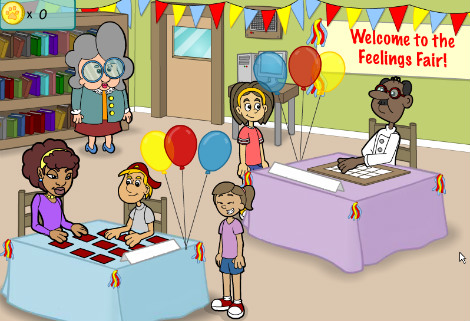Good communication is important for getting along well with others, but students often have difficulty understanding that their body language and facial expressions can affect how their words are interpreted. This body language game below will help students practice by using a twist on the game of telephone.
Tell the group that they will be playing a game called “telephone” in two different ways. The first time they play, they will communicate by speaking. Then they will communicate using only their body language and facial expressions.

Recommended Grade Level: Elementary
SEL Skill(s): Communication
Duration: 30 minutes
Materials: Communication poster
Body Language Game Directions
- For the verbal game of telephone, have students line up next to each other. In the first round, whisper a phrase of your choice to the first student. Each student should then whisper the phrase that she heard to the student next to her, until it reaches the last student. The last student should then say the message aloud, and see if it matches the original.
- Play the game this way for a few rounds, letting students pick the phrase and having students switch places in the line in between rounds.
- For the body language version, explain to students that they will now play a similar game, but instead of passing a verbal phrase down the line, they will try to pass along an idea using body language.
- Have students line up so that they are all facing one way. Tap the first student on the shoulder, and when he turns around, express an emotion with only body language, such as arms crossed and an angry face. This student should then tap the person in front of him on the shoulder and do his best to imitate the body language. Remind students that they should not turn around until they are tapped on the shoulder. Continue until the last student in the line sees the body language, and have her demonstrate what she saw to the class.
- Play the body language version for a few rounds, letting students choose the initial body language expression and having students switch places in line in between rounds. Remind students that their body language should express an emotion, like sadness, surprise, disgust, fear, etc., not just a silly pose.
Post-Discussion:
Once you’ve played a few rounds of verbal telephone and body language telephone, bring the group back together for a discussion. The main goal of this lesson is for students to recognize that we communicate both with our words and with our bodies, so we need to be aware of both while we are trying to convey a message. Ask students what they thought about both versions of the body language game, and try to guide them to this point.
Vocabulary:
Explain that what we say and how we say it is called communication. Communication can be verbal, when we use our words, or nonverbal, when we use facial expressions and body language. Hang the communication poster in your classroom after this lesson for students’ future reference.
Lesson Extension Using Centervention Online Programs
In Zoo U, there are five skill building scenes focused on empathy, and in empathy scene two, players attend a “Feeling Fair” in the library.
The Feeling Fair is comprised of three different games: Moody Mugs where players match emotion words to facial expressions, Choose and Chomp where students match related emotion words and faces with the given scenario, and To the Rescue where players identify how someone is feeling and how to help them in different scenarios.
Additional Resources
Books
- Freddie the Fly: Connecting the Dots
- Donnie Makes New Friends: A Lesson In Eye-To-Eye Contact by Mr. Terrence N. Tullgren
Related Lessons
